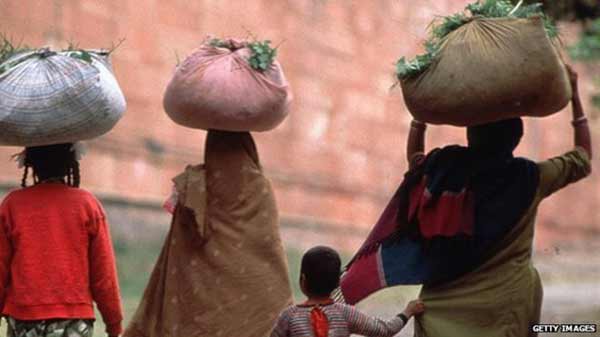
Mumbai, India (BBN)-India's economy grew 7.5 percent in the three months ending in March, higher than the previous quarter and above expectations.
It means the country has outpaced China's economic expansion for two quarters out of the last three, reports BBC.
Forecasts were for growth of about 7.3% for the period compared with a year earlier.
However, the country adopted a new way of calculating growth, which some experts say distorts the real picture.
The country's annual growth for the year 2014-15 was 7.3%.
Despite the robust growth numbers, India's government and its businesses are hoping the country's central bank will move to cut lending rates again soon to give the economy a further boost.
The Reserve Bank of India (RBI) has already cut its benchmark lending rates twice this year, but left its rates unchanged in April.
NEW METHOD
The government revised down India's growth for the period October to December 2014 to 6.6%, compared with the same period the year before.
Its previous figure was 7.5%.
But it also now says growth between July and September was 8.4% rather than the 8.2% earlier stated.
Economists have warned the data needs to be treated with caution since changes were made to the way in which the GDP figure was calculated.
SIMON ATKINSON, BBC MUMBAI
Narendra Modi marked a year in office as prime minister this week and these stats suggest the economy he pledged to improve is, well, improving.
This would have been the third successive quarter of India's economy growing faster than China's.
But because India has revised down the figure from October to December, it means China was still ahead in that period.
And it's worth saying lots of people believe India's GDP figures are overstating the reality - and that's because other economic data - such as factory output and export figures - do not support the view that things are picking up strongly.
The country's new way of calculating GDP has baffled analysts since its release earlier this year.
India said the new formula is closer to international standards.
But analysts have said the new data do not correlate with other economic indicators, including industrial and factory production.
Shilan Shah, India economist at Capital Economics said: The economy is not as strong as the GDP numbers might suggest.
The numbers should not have any bearing on policies and both the central bank as well as the government should look at other activity indicators.
For example, auto sales have dropped sharply this year, while bank lending growth had slowed to rates not seen in over a decade."
Indian Prime Minister Narendra Modi, who won last year's general elections, promised to reform and revive the economy and to attract much-needed foreign investment.
But many say the country is yet to see any of the "big bang reforms" he promised to deliver.